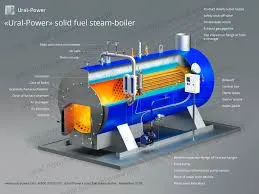
Nov . 24, 2024 04:24 Back to list
gas steam boiler replacement
Gas Steam Boiler Replacement A Comprehensive Guide
Replacing a gas steam boiler is a significant undertaking that can greatly enhance the efficiency and reliability of your heating system. As technology advances, older boilers may become outdated, leading to increased energy costs and reduced comfort levels in your facility. This article outlines the key considerations and benefits associated with gas steam boiler replacement.
Understanding the Need for Replacement
Over time, even the most well-maintained boilers can lose efficiency. Common signs indicating that it may be time for replacement include frequent breakdowns, rising energy bills, and inconsistent heating. Furthermore, older boilers often lack the safety features and controls found in modern models, posing risks to both personnel and property.
Benefits of Modern Gas Steam Boilers
1. Increased Efficiency Modern gas steam boilers are designed with advanced technologies that improve fuel efficiency. High-efficiency models can operate at ratings exceeding 90%, which means more heat generated from every unit of gas consumed.
3. Enhanced Safety Features Today's gas steam boilers come equipped with sophisticated safety mechanisms, including flame safeguards, pressure controls, and automated shut-offs that minimize the risk of accidents.
4. Improved Reliability With advanced materials and engineering, new boilers are built to last and require less frequent maintenance. This reliability can significantly reduce downtime and maintenance costs in the long run.
gas steam boiler replacement

5. Smart Controls Many modern gas steam boilers integrate smart technology, allowing for remote monitoring and control of the heating system. This feature enables predictive maintenance, ensuring that issues are addressed before they escalate into more significant problems.
Steps to Consider for Replacement
1. Assess Your Needs Before replacing your boiler, consider the specific needs of your facility. This includes determining the required heat output, analyzing the existing heating system’s layout, and understanding usage patterns.
2. Choose the Right Model Consult with a heating professional to select a model that meets your efficiency requirements and budget. Consideration should also be given to the size and type of boiler that will best fit your needs.
3. Installation Professional installation is crucial to ensure optimal performance and safety. An experienced technician will navigate local codes and regulations, providing peace of mind that your new boiler is installed correctly.
4. Maintenance Plan After installation, establish a regular maintenance schedule. Consistent check-ups ensure your boiler operates efficiently and safely throughout its lifespan.
Conclusion
Replacing a gas steam boiler is an investment that can greatly increase your facility’s efficiency and safety while reducing operational costs. By understanding the benefits and following the necessary steps, you can ensure a smooth transition to a more effective heating solution, ultimately enhancing the comfort within your space and contributing to environmental sustainability.
-
High-Efficiency Commercial Oil Fired Steam Boiler for Industry
NewsJul.30,2025
-
High-Efficiency Biomass Fired Thermal Oil Boiler Solutions
NewsJul.30,2025
-
High Efficiency Gas Fired Thermal Oil Boiler for Industrial Heating
NewsJul.29,2025
-
High-Efficiency Gas Fired Hot Water Boiler for Sale – Reliable & Affordable
NewsJul.29,2025
-
High Efficiency Biomass Fired Hot Water Boiler for Industrial and Commercial Use
NewsJul.29,2025
-
High-Efficiency Biomass Fired Hot Water Boiler for Industrial Use
NewsJul.28,2025
Related PRODUCTS






















